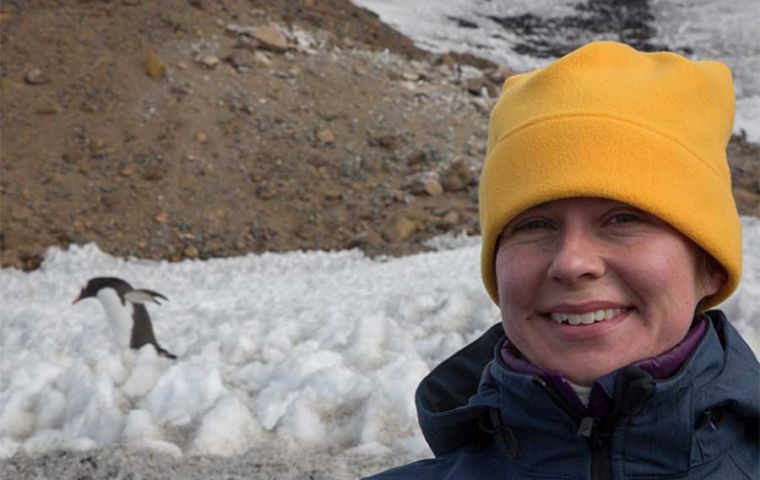MercoPress. South Atlantic News Agency
Tourism tsunami in Antarctica, 125,000 visitors per season and growing
 “The main problem with tourism in Antarctica is that it is growing rapidly, and there is no strict regulation,” Claire Christian, director of the Antarctic and Southern Ocean Coalition (ASOC)
“The main problem with tourism in Antarctica is that it is growing rapidly, and there is no strict regulation,” Claire Christian, director of the Antarctic and Southern Ocean Coalition (ASOC) The massive inflow of tourism in Antarctica during the austral summer, almost 125,000 visitors per season, more than double the number five years ago, is becoming a growing concern for many NGOs and conservation organizations.
“The main problem with tourism in Antarctica is that it is growing rapidly, and there is no strict regulation, something that urgently needs to be addressed,” Claire Christian, director of the Antarctic and Southern Ocean Coalition (ASOC) NGO, told a Spanish news agency in an interview.
“If we want to continue to consider tourism a legitimate activity, it needs to be better regulated,” she added.
Likewise Researcher Chantal Lazen of the Antarctic Studies Program at the University of Chile pointed out that the signatories of the Antarctic Treaty, which was created to govern the continent and has been signed by 58 countries, has adopted over 50 resolutions related to tourism since its creation in 1961.
However, most of them are “voluntary guidelines or recommendations” that also need to be adopted by national legal systems, Lazen said.
For the time being, tour operators undergo national environmental audits and voluntarily register with the International Association of Antarctica Tour Operators (IAATO), whose requirements are much stricter.
Nonetheless, once in Antarctica, tourism is self-regulated and ultimately depends on the operators’ “ethics” as there is no actual control, no police, said guide Santiago Imberti.
In response to the growing demand, some operators also find it “necessary to break or push the rules a bit” to “provide better experiences,” said Imberti.
According to IAATO, tourism in the frozen continent is still mainly maritime, as it was when it begun in the 1950s.
About 80 ships arrive on the Antarctic coast each season, carrying between 12 and 3,150 passengers, mostly Americans, Germans and lately Chinese.
It is recommended that only cruise ships with fewer than 500 tourists disembark at selected points on the peninsula Under the motto “you can’t take care of what you don’t understand,” most of the expeditions promote “a different kind of tourism, of contemplation, learning, and awareness,” the director of the Antarctic 21 Foundation, Edgardo Vega, commented to the Spanish government news agency, adding that these activities met the “high standards of sustainability and social responsibility.”
However despite measures to mitigate its impact on the polar ecosystem, multiple studies have shown that tourism does change wildlife behavior and contributes to melting ice, the introduction of invasive species, and water pollution.
But Vega is realistic, “it would be an illusion to think that by limiting human activity in Antarctica we will avoid all the consequences,” as “these changes are mainly due to what we do as a society in the rest of the planet.”
![“Working directly with President [Donald] Trump and Congress, we accomplished what no one else could,” Patel stressed](/data/cache/noticias/108417/130x80/fbi.jpg)



Top Comments
Disclaimer & comment rulesCommenting for this story is now closed.
If you have a Facebook account, become a fan and comment on our Facebook Page!